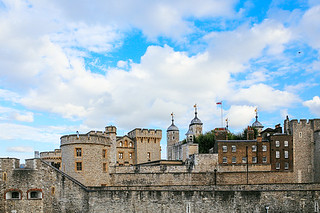
PREV ARTICLE
NEXT ARTICLE
FULL ISSUE
PREV FULL ISSUE
LOOSE CHANGE: JUNE 2, 2019Here are some additional items in the media this week that may be of interest. -Editor Spotlight on the Royal Mint
Lou Golino wrote this overview of the Royal Mint for the GovMint.com site. -Editor
At that time as many as 30 mints were set up in Britain, including in London, and control of those mints alternated depending on which tribe won battles for control of the land. Alfred the Great regained London in 866 AD from a warring tribe and then started issuing silver pennies that featured his portrait. It is with those events that the Royal Mint dates its origin as a continuously operating minting facility. For the following 800 years the mint operated within the Tower of London and then moved to the Royal Mint court, where it remained until the 1960s. In 1968, as the UK was preparing to introduce decimal coinage, Queen Elizabeth II opened the mint's current facility in South Wales at a plant located in Llantrisant. It employs over 900 people. To read the complete article, see:
The Origin of the Dollar Symbol
Dick Hanscom passed along this BBC News article on the origin of the dollar symbol. Thanks. -Editor 
It's shorthand for the American dream and all the consumerism and commodification that comes with it, signifying at once sunny aspiration, splashy greed and rampant capitalism. It's been co-opted by pop culture (think Ke$ha when she first started out, or any number of fast-fashion t-shirts) and borrowed by artists (Salvador Dali fashioned a moustache from it, Andy Warhol rendered it in acrylic and silkscreen, creating an iconic body of work that itself now sells for $$$). In 1520, the Kingdom of Bohemia began minting coins using silver from a mine in Joachimsthal - which roughly translates from German into English as Joachim's valley. Logically if unimaginatively, the coin was dubbed the joachimsthaler, which was then shortened to thaler, the word that proceeded to spread around the world. It was the Dutch variation, the daler, that made its way across the Atlantic in the pockets and on the tongues of early immigrants, and today's American-English pronunciation of the word dollar retains its echoes. Despite the currency's relative youthfulness, however, there is no straightforward answer to the question of where the dollar sign sprang from. Nobody seems to have sat down to design it, and its form still fluctuates - sometimes it has two lines through it, increasingly just the one. Not that there aren't plenty of competing hypotheses. To read the complete article, see:
How Scotland Changed the Face of British banknotes
This BBC News article is a great overview of Scottish banknote innovations, including portraits, color printing, commemorative issues, and polymer notes. -Editor
The bank enjoyed a monopoly in banking north of the border for 21 years. But it was Royal Bank of Scotland which was to prove the more innovative after its foundation in 1727. It wasted no time in issuing the first British note to make a main feature of a face. The portrait belonged to the king at the time, George II. Ruth Reed, head of archives at RBS, explains: "Nobody else had really done that before. Notes had had printed writing and some kind of design - squiggly lines and things. "But by putting a portrait on, it was a very clever move for anti-forgery because humans are so good at distinguishing tiny little differences in faces." To read the complete article, see:
Wayne Homren, Editor The Numismatic Bibliomania Society is a non-profit organization promoting numismatic literature. See our web site at coinbooks.org. To submit items for publication in The E-Sylum, write to the Editor at this address: whomren@gmail.com To subscribe go to: https://my.binhost.com/lists/listinfo/esylum All Rights Reserved. NBS Home Page Contact the NBS webmaster 
|

